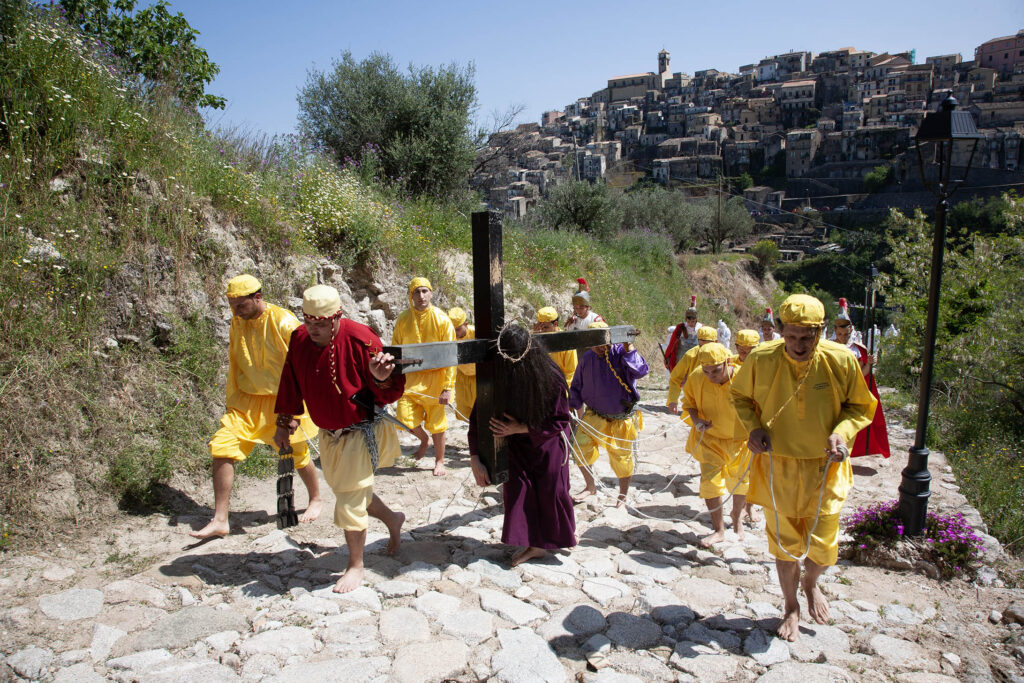Antonio Daconte’s name may not be familiar to many, but his story has had a profound and lasting impact on world literature.
Antonio Daconte became a legendary figure and a source of inspiration for one of the most famous novels of the twentieth century, “One Hundred Years of Solitude” by Gabriel García Márquez, inspiring the creation of the character of Pietro Crespi.
He left Scalea in 1885 aboard the steamer Olinda Rodriguez and headed for Panama, and after his arrival he chose to settle in Colombia. His journey in the Colombian town of Aracataca will be exciting and full of successes, his destiny will intertwine with that of Gabriel García Márquez, thus becoming the foundation of the “magical realism” that characterizes the famous writer.
In picturesque Aracataca, Daconte opened a cozy bar in the central square and undertook several successful businesses, while simultaneously cultivating his passions for bicycles, gramophones and the first radios. His boldness and entrepreneurial vision led him to inaugurate the first cinema in the region, the Salon Olympia, where the young García Márquez experimented with the fascinating world of moving images for the first time.
These extraordinary experiences, lived in the remote Colombian town, will shape the “magical realism” that will make Macondo, the fictional town of García Márquez, a mythical place rich in symbolism. The House-Museum dedicated to Garcia Marquez in Aracataca preserves the memory of Daconte through the two projectors imported for the Cine Olympia, as a lasting tribute to this visionary émigré.
Daconte represents a positive example of integration and active contribution to the local culture, the stereotyped image of the poor emigrant who leaves with a cardboard suitcase is replaced by the telling of stories of men and women capable of redeeming themselves and realizing their talent, a contribution that would probably have remained unexpressed in their countries of origin. Daconte’s emigration thus turns into a journey of success and personal fulfilment, demonstrating that behind every emigrant there is a unique and complex story.
Daconte’s contribution to early twentieth-century Colombian society goes beyond personal success. He represents a generation of emigrants who, with humanity, class and energy, have shaped the foundations of a multicultural and prosperous community.
The life of Antonio Daconte provided the plot of one of the most mysterious and fascinating episodes in Colombian history. Daconte’s story has become a kind of myth, interwoven with reality and legend, fueling the collective imagination. His story comes to life, thanks to the creation of the character of Pietro Crespi, in the pages of “One Hundred Years of Solitude” by García Márquez. This work, first published in 1967, is a masterpiece of magical realism and has earned worldwide recognition, including the Nobel Prize for Literature in 1982 for the Colombian author.
Antonio Daconte is depicted in the novel as a writer and journalist who, struck by loneliness and melancholy, decides to build a typewriter in reverse, inverting the meaning of words. The intent was to write a work that would only make sense when read reflected in a mirror. His story ends tragically when, after completing his work, he shoots himself in the head, ending his life. This story within “One Hundred Years of Solitude” is a reflection of human complexity and the desire to communicate, even when it seems that the world does not understand us. The figure inspired by Antonio Daconte becomes a symbol of the artist’s loneliness, of his desire to create something unique and indecipherable, a form of expression that defies convention.
Antonio Daconte represents a fascinating chapter in the history of Italian emigration and an example of success that goes beyond geographical borders. His figure, immortalized in the pages of Garcia Marquez, continues to inspire those who seek opportunities beyond their homelands, proving that every emigrant brings with them a rich history and unique potential.



